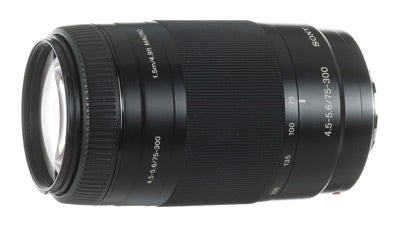Sony 75-300mm f/4.5-5.6 Review
Sony 75-300mm f/4.5-5.6 Review
This lens is a continuation of the old Konica Minolta line, so it can still be used on any old Minolta film camera bodies you may have knocking about...

Verdict
Pros
- Good 75mm performance
Cons
- Noisy and slow AF motor, poor CA at 300mm
Key Specifications
- Review Price: £179
This lens is a continuation of the old Konica Minolta line, so it can still be used on any old Minolta film camera bodies you may have knocking about. In fact, if you have one of the later Minolta 75-300mm lenses, chances are the optics are identical, so you needn’t worry about upgrading.
The zoom action of the Sony is a little stiff, but not enough to be irritating. What is slightly more irritating is the loud grinds and whirrs of the AF motor, especially if shooting low-contrast subjects where the AF struggles to latch onto the subject, hunting around for a few seconds. Combine this with the clunky shutter of the Alpha 100 and you risk an ASBO for noise pollution!
Image Quality
It’s not all bad news though – optically the Sony is a pretty good performer, with excellent performance throughout the aperture range at 75mm, and a similarly consistent performance at full reach. Likewise, the chromatic aberration chart shows reasonable results at 75mm, though this is spoiled by increasing fringing as the focal length is stretched. Ironically, the 300mm sweet spot of f/8 showing the best resolution at that focal length is where chromatic aberration hits its nadir, with a 1-2.2 pixel bleed from centre to corner.
Sample images





Verdict
A better short lens than a long one, with low resolution and fringing at the 300mm end
Trusted Score
Score in detail
-
Value 8
-
Design 8
-
Image Quality 8
-
Features 8

